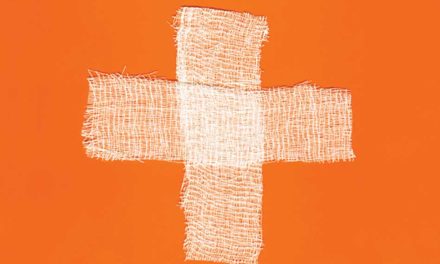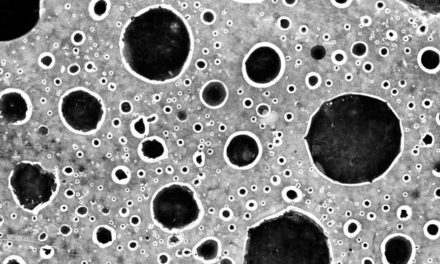
Bebe Loff, Director, The Michael Kirby Centre for Public Health and Human Rights at Monash University, Australia
This brief article on bioethics provides an example of the ethical dilemmas inherent in the doctor-patient relationship when treating cancer, or other serious medical conditions, in low- and middle-income countriries. It stresses the need to understand the context of individual cases and the impact this could have on decision-making by both sides.
Respect for autonomy sits at the heart of much of the teaching of contemporary clinical ethics. Of the four principles of medical ethics commonly taught to medical students (respect for autonomy, beneficence, non-maleficence and justice) most attention is given to how to ensure that decisions of autonomous individuals are respected. Considerable debate exists over the meaning of autonomy and how autonomous individuals ought best be characterized. However, although philosophical accounts of autonomy vary, the primary ethical concern is advancing the ability of individuals to make decisions according to their own authentic preferences, free of manipulation by others. Thus in the medical setting, the physician is encouraged to provide information to an adult, competent patient, using language and processes that enhance the patient’s understanding about the potential risks and benefits of treatment options. The patient should then able to reflect on these options in light of his or her circumstances and make an informed decision. The patient may wish to consult others and is free to do so. The health-care provider is generally obliged to hold in confidence information concerning their patients.
Let us consider this case study: the prospective patient, Asha, is adult and competent. Asha is a member of an extended family living under one roof in a slum in a big city. The family must pool their resources to meet their needs. All family members, including the children, do what they can to contribute to the family income stream. There are five adults: the grandmother who is 58 and the mother of three adult sons aged 40, 35, and 29, the oldest of whom is married to Asha. Asha has four children. She was 19 when she had her first child. She is now 26. It is a loving family that holds traditional beliefs about the primacy of male elders. The two older adult male brothers are the most productive. They work as tailors but are only able to find casual employment that is not well paid. The younger brother did not want to be a tailor but struggles to find any employment. Asha cleans the house of a comparatively wealthy family. The burden of cooking falls mostly to Asha who uses wood as fuel. Fish is a delicacy, which is had once every couple of weeks. Even so, Asha prefers to leave the fish for the adult males and her oldest male child. Frequently she eats only rice.
One day Asha becomes nauseous. She vomits and cannot stand up without assistance but she prefers to lie down. Hours pass and she does not improve. Her mother in law tries to give her a little of their precious water and a herbal remedy last used when Asha was pregnant and nauseated, without effect. This goes on for some days. As she cannot work, Asha loses her job and is only intermittently capable of fulfilling her domestic responsibilities. Asha’s mother-in-law and husband take Asha to visit a traditional healer whose remedies do not produce any improvement. Asha’s husband determines that she should go to the nearest public hospital. His mother and brothers agree. Although it is supposed to be free, the family knows they will need to pay for whatever the hospital does not provide and this is likely to be many services and drugs if they are needed. If Asha is admitted, at least two of them may have to find somewhere to stay near the hospital and this will cost too. The older family members agree that family funds should be spent on improving Asha’s condition and her husband, his mother and middle brother take the money they have and embark on the journey to the hospital. Fortunately the youngest brother is able to look after the children, though he has found a short-term paying job and will need to leave the seven-year-old to look after the other children for hours at a time. Luckily travel (on a bus and a rickshaw) to the hospital takes only two hours but they must wait a further six hours before they are seen. Asha’s husband worries about Asha, the children and the work he and his brother have had to give up because of this visit.
When they are finally seen the doctor asks Asha about her dizziness, and whether she has headaches. She examines Asha’s ears and eye movements and tests the strength of Asha’s hands and feet. She asks Asha if she has had any trauma to her head or neck. After listening to everyone’s responses, as Asha remains quiet, the doctor says she cannot diagnose Asha without conducting some tests. Her condition could be due to a stroke but this is unlikely in someone her age. There may be other causes like middle ear infection, gastroenteritis, anaemia or labyrinthitis. It may be something else. They can do blood and urine tests in the hospital. The doctor recommends that if these tests do not show anything Asha should have a an MRI, however this test will have to be done at a private hospital as the public hospital does not have an MRI. She adds that although the MRI can be helpful it is not necessarily definitive. Asha will have to stay at the hospital under observation while the tests are done. The family will have to pay for the tests at the public hospital because they are carried out by a private pathologist and family members will need to stay with Asha to look after her personal care, feed her, transport her within the hospital as needed and to obtain drugs if they are prescribed. The family asks how much these tests will cost. Asha is alert but does not contribute to the discussion between the doctor and her family. The family decides they will pay for the blood and urine tests. They can manage this. If further tests are needed they will have to sell their meagre belongings including the jewellery Asha received on her marriage and probably take out a loan from someone that has engaged them as tailors. This will probably also mean that the seven year old will have to stop going to school for the time-being. The family decides to follow the doctor’s advice and Asha is admitted.
The doctor, who always tries to do the best for her patients, was not overly concerned that Asha did not express her preference. She understands that when families arrive with a patient in this condition, they have already decided that this is their only hope. She could tell from their questions that the family had Asha’s best interests at heart, unlike some families who have abandoned patients when the diagnosis is of a stigmatised disease (such as HIV/AIDS, tuberculosis or cancer). On the other hand, she wonders whether it was judicious to mention the MRI. And what will happen if the family is unable to afford the costs of these tests or potential treatment – even if it is only aspirin. What if they decide to take out a loan, which they find they cannot repay. The diagnostic process will have been wasted and the family will be very much worse off than it was before agreeing to the tests. She has had one family where the breadwinner committed suicide because he could no longer meet the costs of a catastrophic health event affecting a family member or support his family. But, as a doctor, what can she do?
Clinicians working in resource poor health systems with patients who are poor, or even middle class, inevitably deal with situations that are not contemplated in standard texts on medical ethics. Autonomy and respect for it emerges from centuries of Western philosophy as a central value. The four principles cited earlier arise from a watershed moment for bioethics, at least in the West. They are the product of the 1979 report of the National Commission for the Protection of Human Subjects of Biomedical and Behavioural Research, otherwise known as the Belmont Report (1). This Commission was the response of the then US Department of Health, Education, and Welfare to reports of unethical research including the notorious “Tuskegee Study of Untreated Syphilis in the Negro Male”. Transferring these principles from research to clinical practice was largely consistent with the direction of social movements seeking to make the consumer the key unit of concern in service delivery, rather than privileging paternalistic professional opinions. This approach is now reinforced by domestic case and statute law in many countries and in international human rights law.
The simple proposition that an adult ought to be able to make their own choices does not appear terribly controversial and this writer believes the proposition has value. Difficulty arises however, when ethical challenges are not readily resolved by resorting to autonomy as the solution. In other words, normative bioethical analysis contemplates a patient consulting a doctor and the patient being the sole unit of concern. There are versions of autonomy that recognize, to different degrees, that patients are social beings who may be subject to many influences. However the vision of the doctor/patient relationship remains intact and this relationship is, overwhelmingly, the key ethical consideration. The sorts of ethical issues that emerge may be about patient competence, the sufficiency of information provided to patients, understanding, voluntariness and coercion, authenticity of decision-making and like matters. However, consideration of these issues does not help determine an ethical pathway when the welfare of the patient is one of several legitimate competing considerations.
In contrast Azétsop and Rennie (2) observe that: “… patients in resource-poor settings are often not concerned with their ability to determine and shape the course of cure. Their arrival at the local health centre is the outcome of a long family discussion that led to the collection of money. Sometimes, the patient arrives at the dispensary when the disease has reached its critical stage because the cost of care is too high. The primary expectation of both patient and family is to get the medicine or undergo a medical procedure they need and go back to their workplace. Spending time at the hospital means loss of earnings for them and their families or the diminishment of financial resources. When people can barely afford the cost of care or satisfy the nutritional requirements for a good recovery, the ethics of medical encounter should be understood differently and expressed in different terms than patient choice.”
Understanding the context in which medical decisions are made is critical. It is from the context that we learn about the ethical challenges that are being faced by health service providers. In 1999, Arthur Kleinman wrote about the tendency of bioethics to “prioritize often esoteric professional formulations over ordinary, commonsensical patient and family perspectives”. He talks of the necessity of relating ethical deliberation to local context and of the importance of identifying what is locally at stake:
“The irrelevance of ethics can be seen when considering universal ethical formulations of justice and equity that do not begin with the local moral conditions of poor people, those experiencing the systematic injustice of higher disease rates and fewer health-care resources because of their positioning at the bottom of local social structures of power. Dealing with issues of justice in the absence of these contextual concerns renders ethical formulations mere speculations, utopian pronouncements that are gratuitous and beside the point (3)”.
At this time there is no consensus about what might constitute an ethical response to the challenges faced by the many doctors treating families like Asha’s and there are many of them. It is time discussion began.
Biography
References
1. National Commission for the Protection of Human Subjects of Biomedical and Behavioural Research Ethical Principles and Guidelines for the Protection of Human Subjects of Research April 18, 1979 Available from http://www.hhs.gov/ohrp/humansubjects/guidance/belmont.html
2. Azétsop J, Rennie S. Principlism, medical individualism, and health promotion in resource-poor countries: can autonomy-based bioethics promote social justice and population health? Philosophy, Ethics, and Humanities in Medicine 20105:1 DOI: 10.1186/1747-5341- 5-1
3. Kleinman, K. Moral Experience and ethical reflection: Can ethnography reconcile them? A quandary for “the new bioethics”. Daedelas 1999; 4; 69-97







